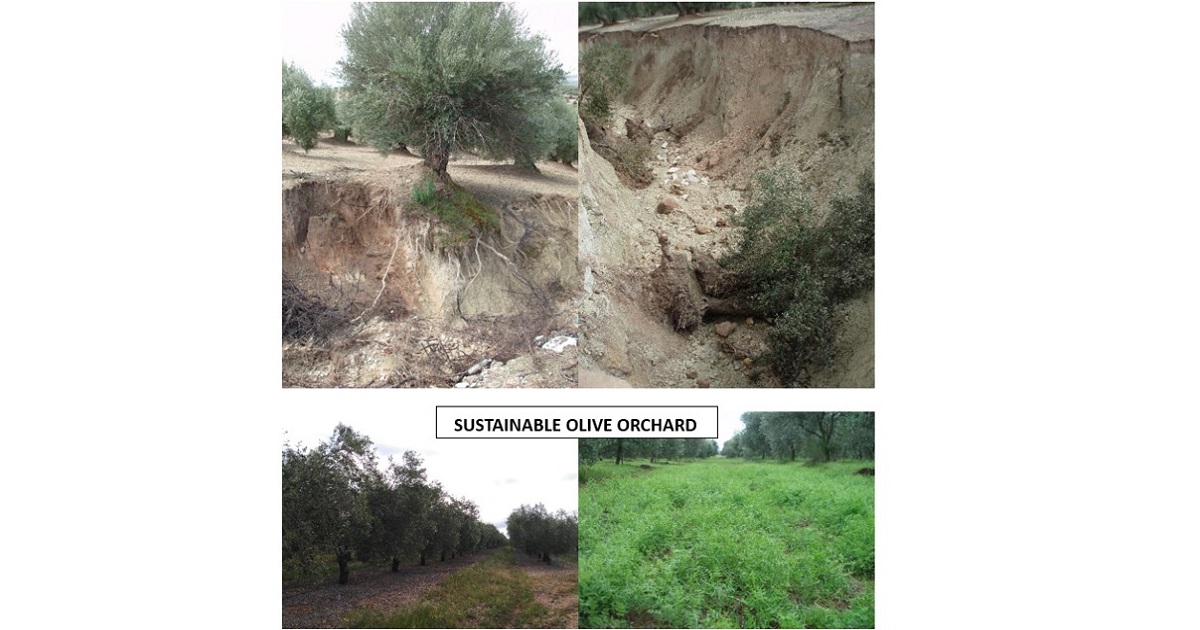Soil Conservation in Olive Orchard
A special issue of Agriculture (ISSN 2077-0472). This special issue belongs to the section "Agricultural Soils".
Deadline for manuscript submissions: closed (15 December 2024) | Viewed by 11026

Special Issue Editors
Interests: conservation agriculture; carbon sequestration; groundcovers; mulching; soil health
Special Issues, Collections and Topics in MDPI journals
Interests: greenhouse gasses emissions; carbon sequestration; no tillage; circular economy; olive mill waste
Special Issues, Collections and Topics in MDPI journals
Interests: climate change mitigation; conservation agriculture; sustainable mechanization; carbon sequestration; cover crops
Special Issues, Collections and Topics in MDPI journals
Special Issue Information
Dear Colleagues,
Olives constitute a significant crop in the Mediterranean basin. Due to its characteristics, this crop is not very demanding in terms of requiring fertile and deep soils, and it is well adapted to the Mediterranean climate. Most plantations are rainfed and usually are established in poor soils on hills. This, combined with an improper soil management strategy that leaves large areas of bare soil, causes the degradation of aggregate stability and increases erosion, depleting soil organic matter, nutrients and general biodiversity when high-intensity rainfall events occur.
Solutions for conserving the soil and improving its health are needed to attain olive orchard sustainability. Soil status can be improved through the use of management practices that conserve the soil, increase organic matter, and improve fertility. Likewise, recycling natural resources must be considered in order to foster a circular economy in the olive orchard.
To achieve a sustainable olive sector, three dimensions of sustainability should be considered: environmental, economic and social. In the Mediterranean area, many localities depend on the olive sector economically and socially. Thus, sustainability improvements will benefit all realms of social life.
Furthermore, sustainable practices should provide other ecosystem services, such as climate change mitigation, biodiversity improvement, water quality and the maintenance of soil fertility.
The focus of this Special Issue will be to bring together advances towards applications of sustainable practices in olive orchards. We welcome the submission of novel research, reviews, and opinion pieces on related topics.
Dr. Miguel Angel Repullo-Ruibérriz de Torres
Dr. Rosa María Carbonell-Bojollo
Prof. Dr. Emilio J. Gonzalez-Sanchez
Guest Editors
Manuscript Submission Information
Manuscripts should be submitted online at www.mdpi.com by registering and logging in to this website. Once you are registered, click here to go to the submission form. Manuscripts can be submitted until the deadline. All submissions that pass pre-check are peer-reviewed. Accepted papers will be published continuously in the journal (as soon as accepted) and will be listed together on the special issue website. Research articles, review articles as well as short communications are invited. For planned papers, a title and short abstract (about 250 words) can be sent to the Editorial Office for assessment.
Submitted manuscripts should not have been published previously, nor be under consideration for publication elsewhere (except conference proceedings papers). All manuscripts are thoroughly refereed through a single-blind peer-review process. A guide for authors and other relevant information for submission of manuscripts is available on the Instructions for Authors page. Agriculture is an international peer-reviewed open access semimonthly journal published by MDPI.
Please visit the Instructions for Authors page before submitting a manuscript. The Article Processing Charge (APC) for publication in this open access journal is 2600 CHF (Swiss Francs). Submitted papers should be well formatted and use good English. Authors may use MDPI's English editing service prior to publication or during author revisions.
Keywords
- erosion
- soil fertility
- soil organic matter
- conservation agriculture
- runoff
- soil tillage
- groundcovers (cover crops)
- organic amendment
- circular economy
Benefits of Publishing in a Special Issue
- Ease of navigation: Grouping papers by topic helps scholars navigate broad scope journals more efficiently.
- Greater discoverability: Special Issues support the reach and impact of scientific research. Articles in Special Issues are more discoverable and cited more frequently.
- Expansion of research network: Special Issues facilitate connections among authors, fostering scientific collaborations.
- External promotion: Articles in Special Issues are often promoted through the journal's social media, increasing their visibility.
- Reprint: MDPI Books provides the opportunity to republish successful Special Issues in book format, both online and in print.
Further information on MDPI's Special Issue policies can be found here.





